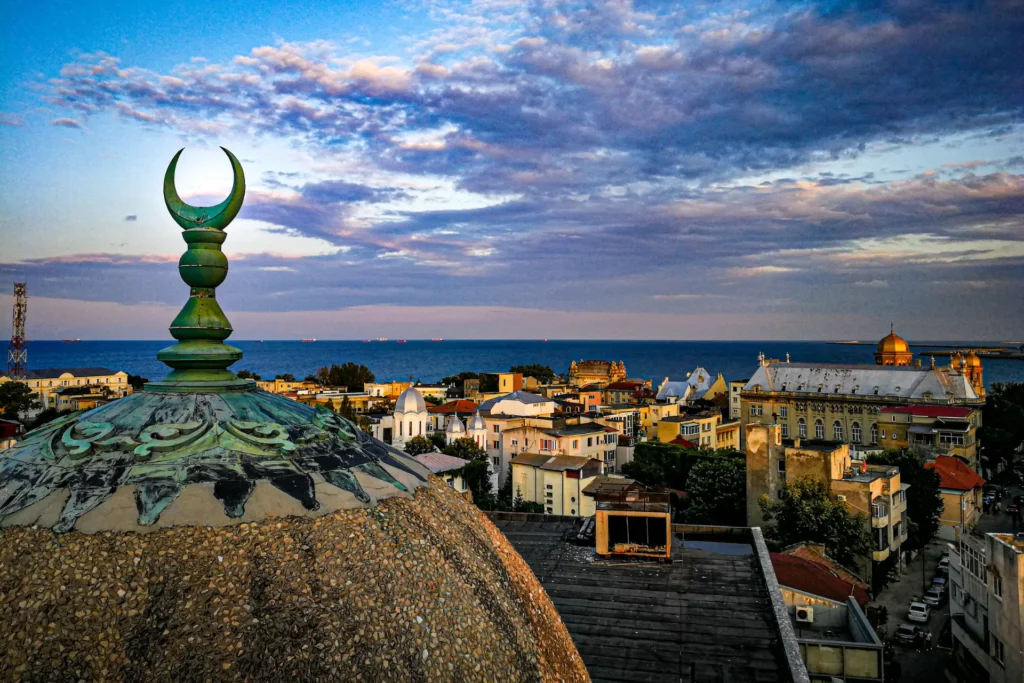Driving in Romania
Tips for the Road
- Romania follows the right-hand driving system
- Drivers should yield to traffic approaching from the right at junctions or crossroads, unless traffic signs indicate otherwise.
- Turning right on a red light is strictly prohibited in Romania, unless there’s a sign specifically allowing it.
- In Romania, the use of dipped headlights during the day is mandatory on all types of roads. This rule applies throughout the year to increase visibility and road safety.
- Using mobile phones without a hands-free system while driving is strictly forbidden in Romania.
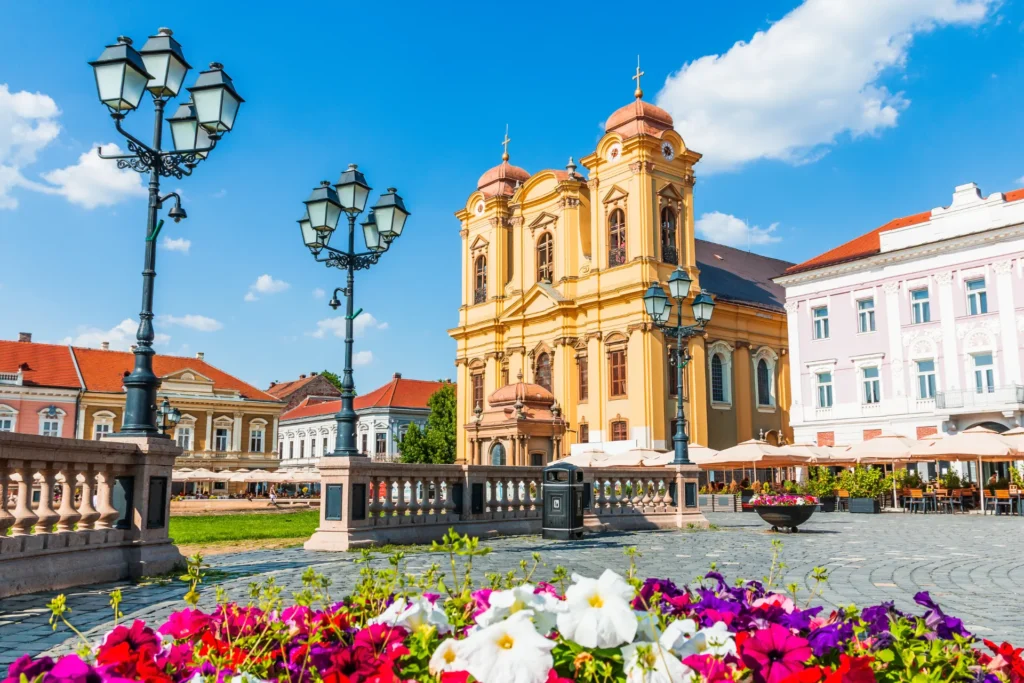
Road Types and Speed Limits
- Speed Limit: Typically 130 km/h (81 mph), though it may be reduced in certain areas or during adverse weather conditions.
- Characteristics: These roads connect major cities and regions. They feature modern amenities and service areas, facilitating efficient long-distance travel.
- Speed Limit: Generally around 100-120 km/h (62-75 mph).
- Characteristics: Designed for high-speed travel, but with fewer characteristics of a motorway. They connect important urban areas and are a vital part of the national infrastructure.
- Speed Limit: Generally around 100 km/h (62 mph) outside urban areas. Characteristics: National roads connect larger cities and towns, forming a network for national connectivity.
- Speed Limit: Usually around 90 km/h (56 mph).
- Characteristics: County roads connect smaller towns and villages.
- Speed Limit: Typically around 50 km/h (31 mph) within urban areas, but can be as low as 30 km/h (19 mph) in residential or high pedestrian areas.
- Characteristics: Urban roads facilitate local traffic within cities and towns, providing access to residential, commercial, and industrial areas.
Romania requires drivers to purchase a vignette, known locally as 'rovinieta,' for the use of its motorways and certain national roads. This vignette, which must be acquired before using these roads, is available for varying durations, ranging from a few days to a full year, accommodating both short-term visitors and long-term residents. It can be conveniently purchased at border points, post offices, some gas stations, and also online through official platforms. The enforcement of this requirement is carried out through a network of cameras that check vehicles for a valid vignette.
- Bucharest–Pitești Expressway (A1): Is a major expressway linking Bucharest with Pitești, facilitating travel between these key cities.
- Transfăgărășan Highway (DN7C): One of Romania's most famous roads, known for its scenic beauty as it winds through the Carpathian Mountains, offering access to notable destinations like Balea Lake and Poenari Castle.
- Cluj-Napoca–Baia Mare Route (E58): This route connects Cluj-Napoca with Baia Mare and is important for accessing northern Romania, including the Maramureș region.
- Bucharest–Constanța Motorway (A2): This motorway provides a direct link from Romania's capital to the Black Sea coast, terminating in the port city of Constanța.
- Black Sea Coast Road (DN39): The DN39 is a significant road along the Black Sea coast, connecting Constanța to Mangalia and passing through various seaside resorts. It's a key route for exploring the coastal area.
Top City Destinations
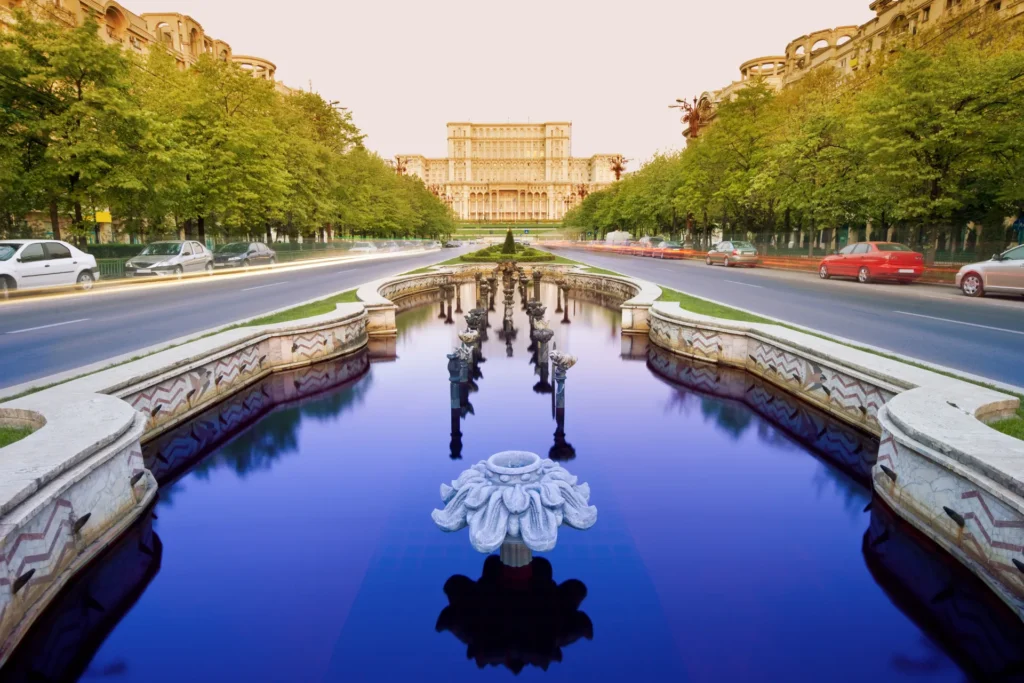
Bucharest
Bucharest is a city pulsating with energy, where you can get lost in its myriad of attractions and activities. The Palace of the Parliament, a behemoth of architecture and one of the largest buildings in the world, is a must-see for its sheer size and history. Immerse yourself in the cultural heartbeat of the city at the Romanian Athenaeum, an iconic concert hall celebrated for its stunning architecture and superior acoustics, hosting the renowned George Enescu Philharmonic. Step back in time at the Village Museum (Muzeul Satului), an open-air ethnographic treasure in Herăstrău Park, where traditional Romanian village life comes alive with authentic peasant houses and workshops from across the nation. For a rejuvenating experience, head to Therme Bucharest, just outside the city. This expansive wellness and relaxation center, complete with thermal waters, saunas, and pools, offers the perfect retreat. As night falls, dive into Bucharest’s vibrant nightlife. The city buzzes with an array of bars, clubs, and lounges, especially in the Old Town, each spot offering a unique glimpse into the city’s dynamic after-dark scene. And don’t forget the Carturesti Carusel Bookstore in the Old Town. This beautiful, modern bookstore isn’t just a haven for book lovers; its cozy café invites you to linger over a coffee and a good read.
Timisioara
Timișoara, a city rich in culture and history, offers a plethora of unique and exciting activities. Explore its past at the iconic Timișoara Orthodox Cathedral, an architectural gem with a stunning façade and majestic spires. Stroll through the historic Union Square (Piața Unirii), where the vivid hues of Baroque buildings mingle with charming cafes, creating an enchanting ambiance. Don’t miss the picturesque ‘Umbrella Street’ near Liberty Square, a perfect spot to get some fun, colorful photos. The Timișoara National Theatre showcases a variety of captivating plays and performances. Indulge in local culinary delights such as ciorbă de burtă (tripe soup) and sarmale (stuffed cabbage rolls), and treat yourself to papanasi, a delectable Romanian dessert. Art enthusiasts will find the Timișoara Art Museum’s extensive collection of Romanian and European art an insightful journey through the region’s artistic heritage.
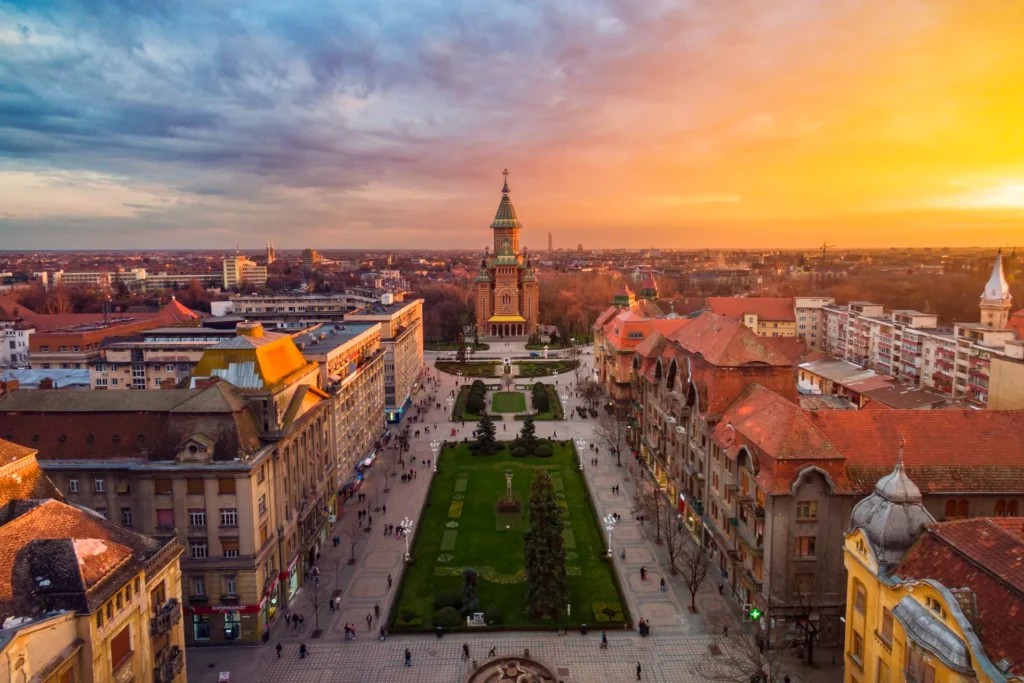
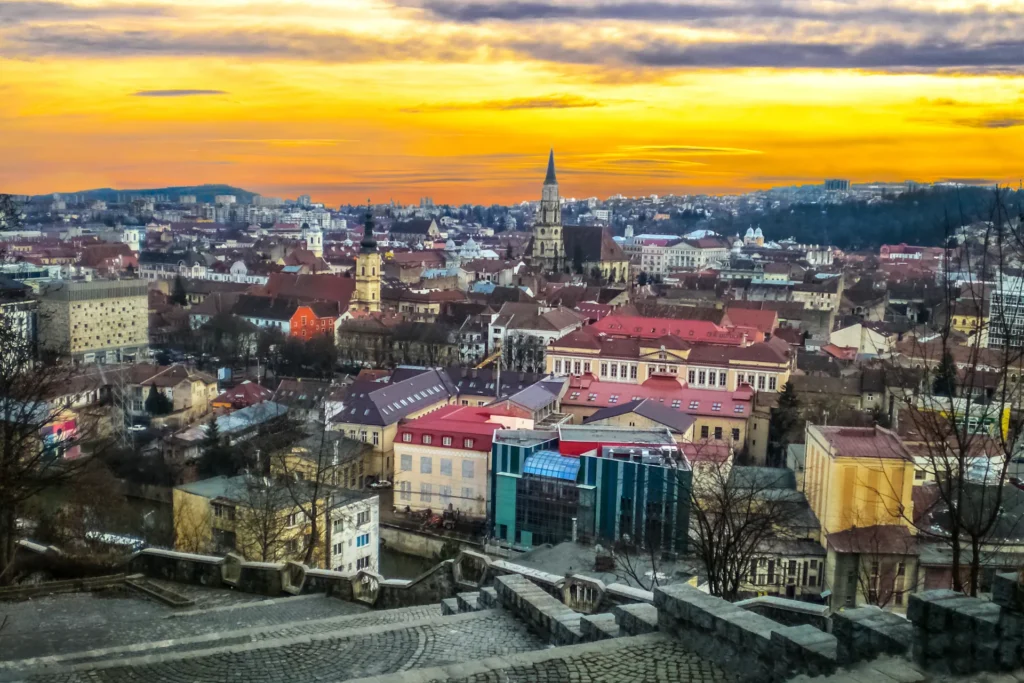
Cluj-Napoca
In Cluj-Napoca,is a bustling hub of youth and culture. Start your adventure at St. Michael’s Church, a stunning example of Gothic architecture with Romania’s tallest church tower, dating back to the 14th century. Then, make your way to Unirii Square, the heart of the city, encircled by gorgeous buildings showcasing a mix of Baroque, Gothic, Renaissance, and Neoclassical styles. Don’t miss the Tailors’ Tower, a 15th-century fortification with intriguing Gothic windows and loopholes. For a deep dive into the region’s heritage, visit the Ethnographic Museum of Transylvania, home to a fascinating collection of over 40,000 artifacts that reveal the rich peasant culture of the area. And for an artistic treat, head to Banffy Palace, a baroque architectural gem that also houses the Art Museum. Cluj-Napoca’s lively spirit is especially evident on Piezisa Street, famous for its bustling student bars and electric nightlife.
Constanta
Constanta, the heart of the Black Sea. The Archaeological Park is a treasure trove of relics from the past, offering a peek into centuries-old civilizations. Swing by the iconic Genoese Lighthouse, an emblem of the city’s rich maritime heritage. Head over to the National History and Archaeology Museum, with exhibits showcasing an intriguing collection ranging from Greek and Roman relics to medieval treasures, offering a glimpse into the region’s past. The Romanian Navy Museum is a must-see for naval enthusiasts. The Natural Sciences Museum Complex, with its playful dolphins and star-gazing planetarium, offers a day of wonder, perfect for families. The Constanta Aquarium, one of Romania’s oldest, showcases a mesmerizing underwater world. For those seeking relaxation, the city’s sandy beaches provide the perfect escape, with Modern Beach and Tomis Marina being popular choices. Indulge in fresh seafood and local coffee, reflecting the city’s rich culinary tradition.
